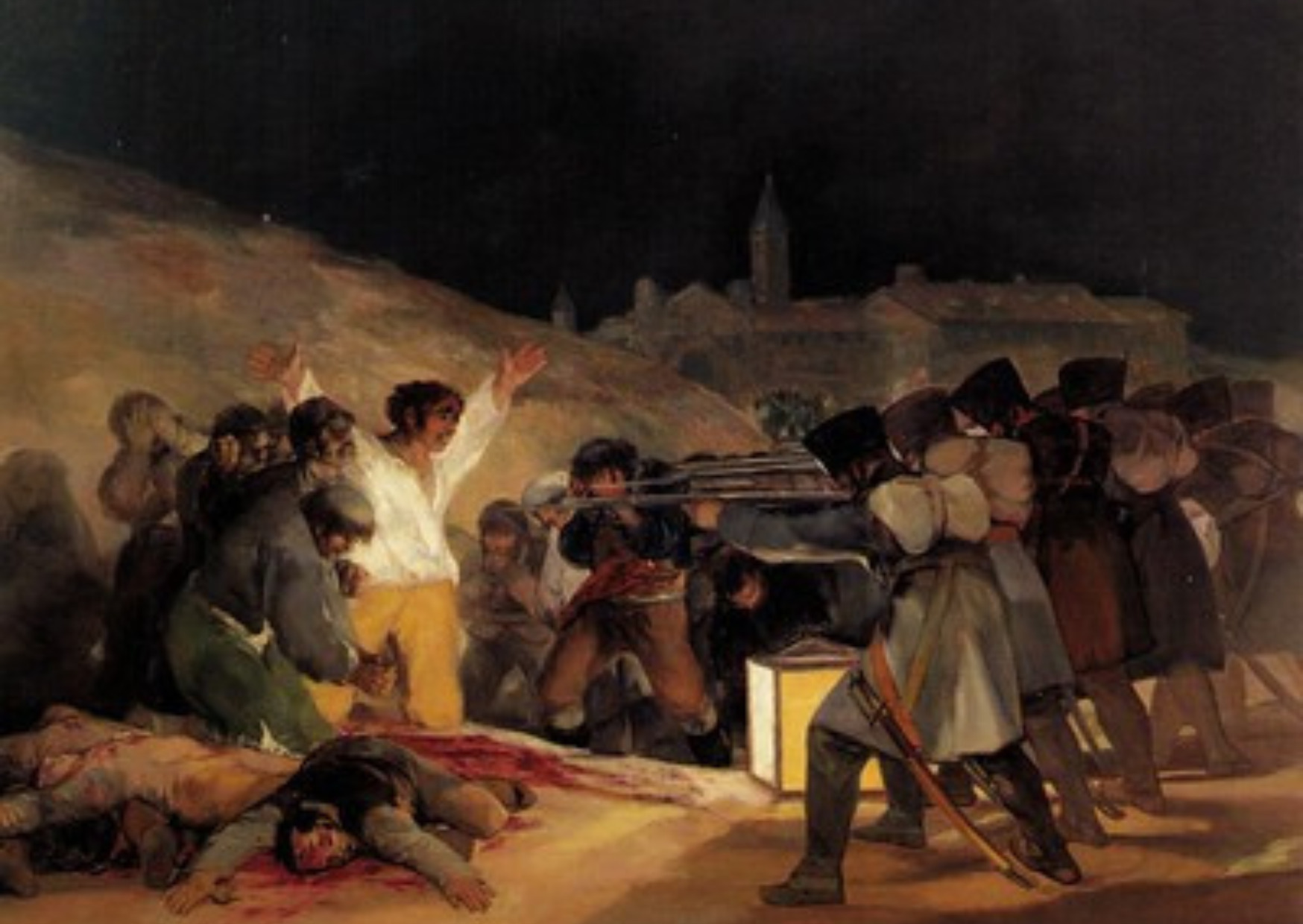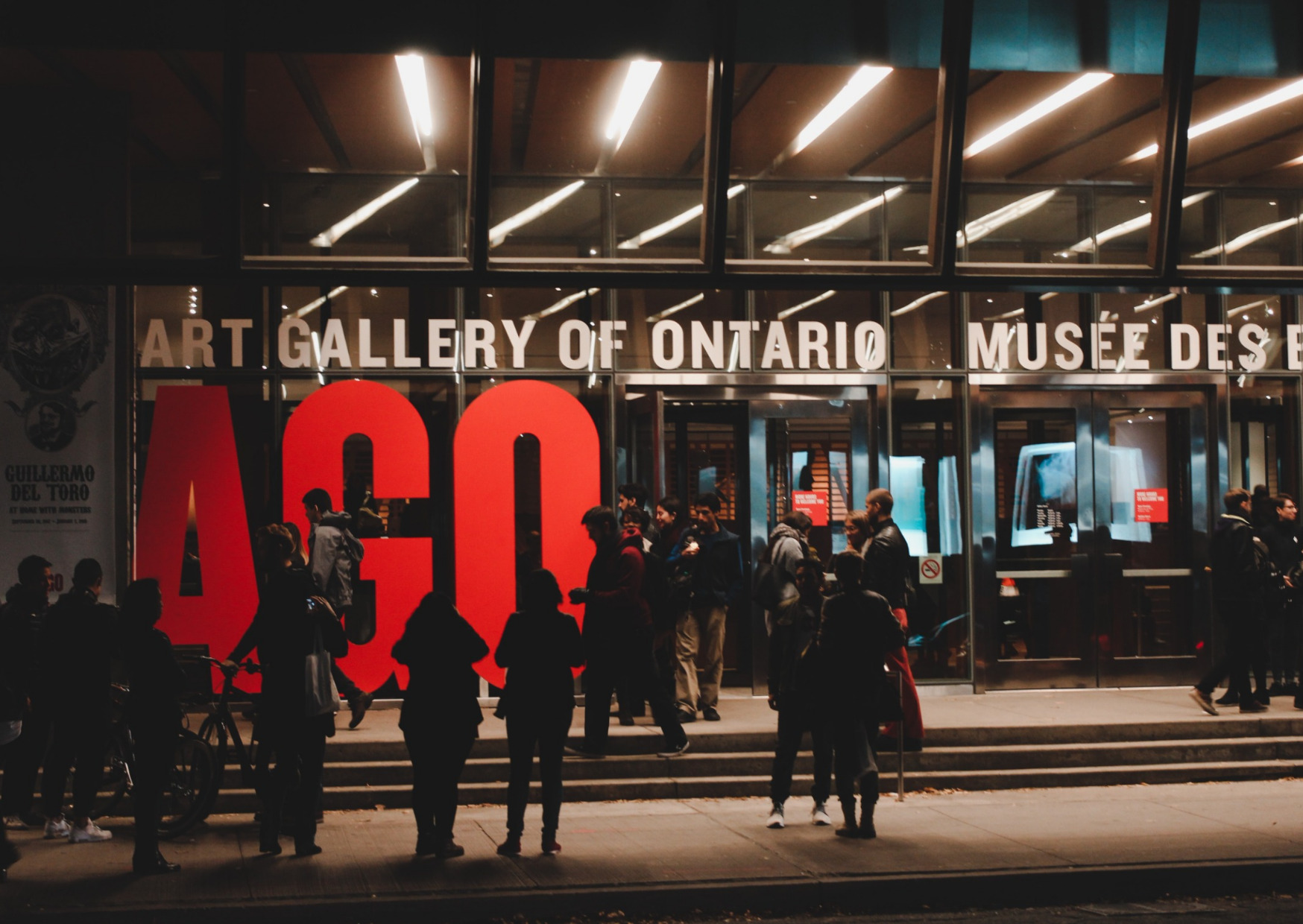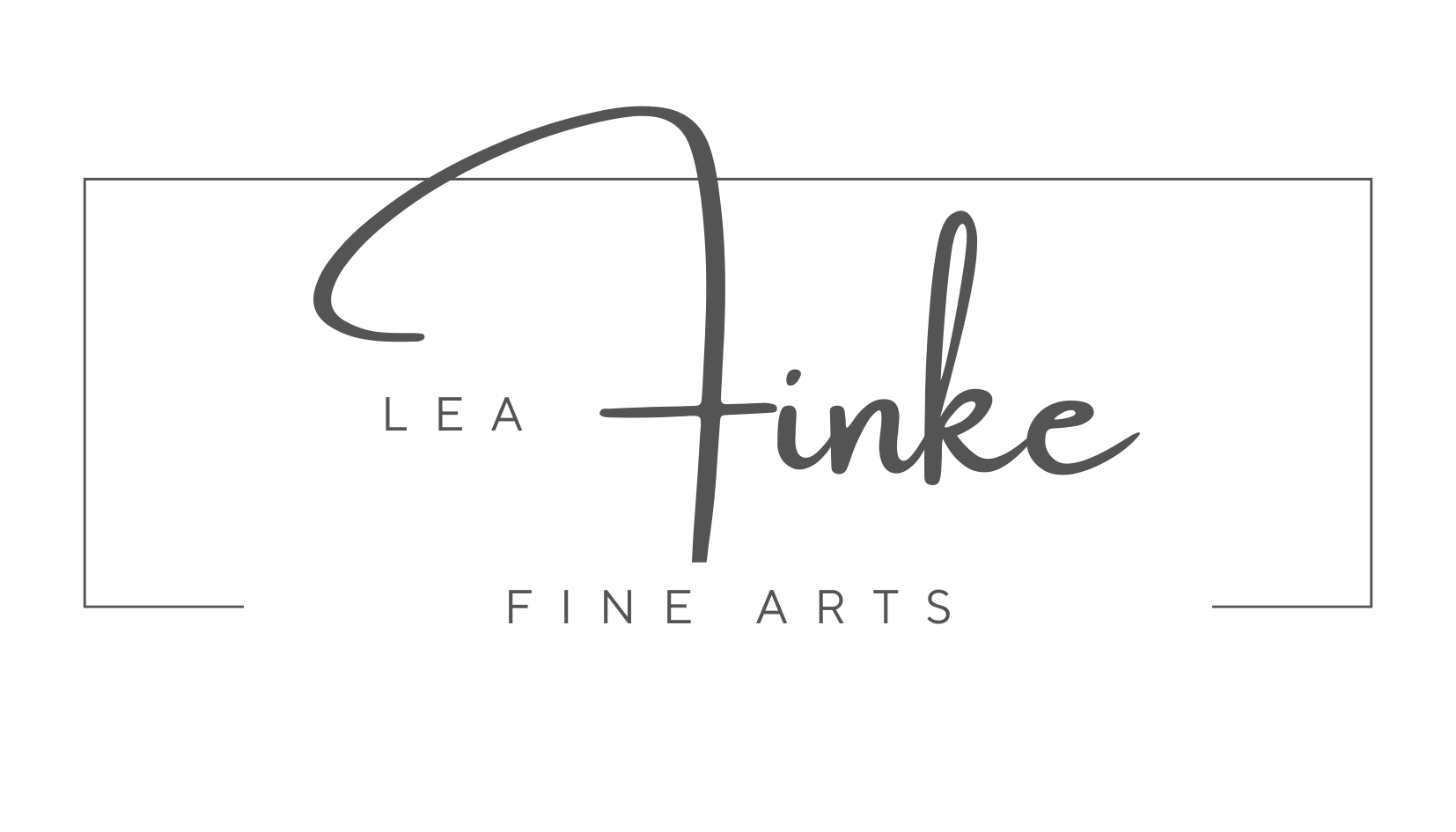Art is an inescapable part of human existence. Since the beginning of time, we have expressed ourselves by creating works of art - from the cave paintings of the Stone Age to modern digital artworks. We have always sought ways to express ourselves, to communicate our thoughts and feelings. And in art, we find a language that allows us to externalize our inner world and understand the world around us. It is a universal language that connects and inspires us.
But art is more than just personal expression. It has the power to shape and influence culture and history, to inspire social change, and to encourage us to think about ourselves and our world. It is hard to imagine a human activity that has not been influenced or inspired in some way by art.
Art as a connection between the past, present and future
Works of art are like magical treasures that preserve and maintain the culture and history of our society. They tell stories of times gone by, of our ancestors and their values. Through them, we can connect with our past and learn from it to shape our future. Art is a mirror of our society, showing us how our values and ideals have evolved over time and the challenges we have overcome.
- Art as an expression of identity: Art reflects not only the individual, but also the culture and society in which it was created.
- Art as cultural heritage: Works of art can preserve cultural traditions, customs, and values for centuries and pass them on to future generations. They show us where we come from and who we are.
- Art as a mirror of time: Art can help us better understand the past and critically engage with our own time.
Identity expression
Every culture has its own way of perceiving and interpreting the world around it. And art is one of the most important expressions of that cultural identity. Whether it is painting, sculpture, music, or literature, each art form reflects a society and its values, beliefs, and traditions.
Art often contains clues to a culture's way of life, customs, and history. The symbols and motifs in a work of art can tell us much about a community's spirituality, mythology, or folklore. It may recount historical events or address critical issues important to a culture.
However, it is not static - art as a cultural identity changes and evolves over time, reflecting changes in society. New technologies, economic developments, or political changes can influence and change the art of a culture.
Art can also be a bridge, helping us to better understand other cultures. It encourages us to engage with other cultures and to open our minds to the diversity and beauty of the world. When we look at the art of another culture, we can better understand and connect with its values and beliefs. Art has the power to break down barriers and bring us closer together.
Cultural heritage
When Mount Vesuvius erupted in the fall of 79 A.D., it destroyed Pompeii and buried the city under massive lava flows. It was rediscovered many hundreds of years later, and buildings and works of art were excavated and restored.

Pompeji
The murals in Pompeii paint a vivid picture of life in the ancient city. They show us not only how people lived their daily lives, but also their ideas of beauty, aesthetics, and eroticism. For example, the paintings show stylized plants and flowers, mythological figures, and everyday scenes. Artists of the time were able to document and communicate the cultural and social norms of society through their work.
Sexual depictions were widespread in Roman culture at the time and were considered something natural. For example, in the wall paintings we can see erotic scenes between men and women as well as same-sex depictions. These images show us that Roman society had a very permissive attitude. Sexuality was neither taboo nor hidden, but celebrated in public.
Art shows us how attitudes and values change over time. Our current ideas and taboos are not universal and timeless, but are strongly influenced by cultural and historical contexts. We should keep questioning them. Art helps us to do this and inspires us to be more open and tolerant.
Mirror of time
Art is always a reflection of its time. It gives us a glimpse into the world of past eras and helps us understand historical events and developments. Renaissance art is an excellent example of this. The upheavals and changes in society at the time were not only reflected in art, but also led to new developments, techniques, modes of representation, and even a new appreciation and importance of art and artists in general. The art world as we know it today had its beginnings during the Renaissance and would not have been possible without it. Even today, many artists are influenced by Renaissance art.

Andrea Pozzo | The Apotheosis of St. Ignatius | Sant'Ignazio Rome
It was a time of upheaval. The knighthood gradually began to disintegrate. Its ideology and that of late feudalism, which had once characterized the behavior of the nobility, was no longer contemporary and lost its meaning. The world was changing. In search of orientation, people turned back to the values of the classical era.
This led to an entirely new understanding of art, science, and society. The humanist movement emphasized the importance of the individual and human reason.
The Renaissance was a time of reawakening, curiosity, and discovery. Freedom and individuality were the spirit of the age. Art reflected this by focusing on the human figure and moving away from the religious themes of medieval art. Instead, it focused on the beauty and complexity of the human form, depicting it in an impressive variety of ways.
Renaissance painters and sculptors strove to depict the human form and anatomy as realistically as possible. They developed new techniques that enabled them to do so. Their artwork was increasingly influenced by mathematical and scientific principles that affected perspective, proportions, and lighting effects.
For the first time, works of art were signed by their creators. They took pride in their authorship. An artist's signature became a symbol of his or her artistic personality. Artists were no longer craftsmen, but created works of art of extraordinary beauty and elegance.
This new appreciation helped to give art an increasingly important place in society.
The Catholic Church remained the most important patron. But princes, nobles, and wealthy citizens also had their portraits painted by artists or had their castles and palaces decorated with works of art.
How art can help visualize social problems
Art is an instrument that not only preserves, but also transforms and has the potential to make the world a better place. It has the ability to make us rethink our view of the world and to sensitize us to social, political and ecological problems. Complex issues can be presented in art in a way that is understandable and accessible to a wide audience.
The viewer is challenged to engage with relevant issues and to advocate for change. Issues such as war, oppression and exploitation, the environment, equality and human rights, racism, discrimination and social injustice in the work of artists can raise awareness of existing problems and lead to public debate.
Art brings us closer to these issues. We experience, learn, understand - but most of all, we feel. We see the big picture and the individual destiny! But many artists also actively contribute to improving people's lives by using their art to raise money for charitable causes. Often they are part of initiatives to raise money for local communities affected by poverty, disease, or injustice. But individual artists and small groups of artists also get involved locally or around the world.
In February 2022, when Russia invaded Ukraine in a terrible war of aggression, artists around the world sold their work so that the money raised could be used to send warm blankets, food, and supplies to Ukraine.
Artists for Peace and Justice provides impoverished youth in Haiti with access to education, paving the way for meaningful employment and a sustainable future.
Barefoot Artists works with impoverished communities around the world, using the arts to promote healing, self-empowerment, and social change.
Art as the voice of protest
Pablo Picasso's painting "Guernica" depicts the consequences of the air raid on the Spanish village of Guernica during the Spanish Civil War in 1937. The defenseless town of no military importance was brutally bombed and destroyed. One third of the civilian population was injured or killed.
Picasso's Guernica is a symbol of the horror of war, depicting the destruction, chaos and despair caused by war, violence and cruelty. The monochrome painting shows a multitude of overlapping, distorted shapes and figures. Death and dying are everywhere.
The grotesque figures and strange structures add to the sense of destruction and chaos. In the foreground of the painting, people and animals flee or die in panic and despair. They are connected and interacting in various ways, suggesting that all people are affected by the consequences of war.
Picasso was a politically engaged artist who repeatedly rebelled against oppression and violence. During World War II, during the occupation of Paris, a German officer is said to have asked Picasso if he had created "Guernica". Picasso is said to have replied, "No, that's what you did".

Der Bruderkuss

George Floyd

Shooting of the insurgents

Politics

Feminism

Social criticism
Migrant Mother, a 1936 photograph, shows Florence Owens Thompson. A mother of seven who moved across the country during the Great Depression in search of work and a better future in the United States. She is seen with her two youngest children at a migrant worker camp in California. The photograph became a symbol of the impact of economic hardship on families, especially women and children.
Dorothea Lange took it on behalf of the Farm Security Administration to draw attention to the poor living conditions of migrant workers. It was part of a series of documentary photographs taken during the Depression that documented the lives of poor and marginalized people in the United States.
The publication of Migrant Mother and the documentary series had a significant impact on public opinion and awareness of the situation of migrant workers. Outrage at the conditions evoked by these images led to a groundswell of support. As a result, various measures were taken to improve the situation of migrant workers, including the establishment of shelters, increased wages, and the creation of work programs.
How art can support education

Tate Modern, London
In a world where we are often inundated with data, facts and information, art can play a crucial role in educating us on a deeper level. In schools, it is part of the curriculum, but there are many ways to experience and learn about art outside of school. Art in public spaces, museums and galleries, live performances of concerts and plays, and creative hobbies such as painting and writing can lead us to engage with art in ways beyond simply looking at paintings or sculptures.
Art increases emotional intelligence. It helps us engage with new ideas and perspectives, and deepens our understanding of language, culture, and history.
It can make us reflect on our own thoughts and experiences, and better understand ourselves and the world around us. At a time when education is often reduced to learning facts and figures, art promotes a broader, deeper education.
It is important that art is not only taught in schools, but is also accessible outside of school, regardless of age, background, or income. It is time to recognize the importance of the arts to our education and well-being.
Art in school
Unfortunately, art is often considered superficial and unimportant. But it is so much more than just a study of colors and shapes. Art allows us to express our thoughts and ideas in creative and unique ways, and to look at the world around us differently.
Through art, students can explore a variety of topics, such as social justice, culture, or environmental issues. They can develop their own perspectives on these issues and inspire others to think about them through their artwork.
Creativity and critical thinking are skills that are invaluable in today's world. Art teaches these skills uniquely, where students learn to develop ideas and solve problems in unconventional ways. Through the process of creative work, they also learn to take risks and deal with failure, which will serve them well in all aspects of their lives.
In addition to these important skills, art also teaches students practical technical skills. They learn to use a variety of materials and tools and improve their ability to create artwork. This can not only build their confidence and self-esteem, but also open doors to other creative fields such as design or architecture.
Overall, art is an important part of education and should not be considered a minor subject. Through art, students can gain important skills and perspectives that will help them succeed and be creative in an ever-changing world. We should recognize the potential of art in schools and ensure that it plays an important role in our children's education.
SKILLS TAUGHT THROUGH ART
- Creativity
- Cultural sensitivity
- Problem-solving skills
- Visual Perception
- Emotional intelligence
- Motor skills

Challenges for the arts in society
Despite its beauty and appeal, there are many challenges that art faces in society.
Societal perceptions of art: Some people view art as unnecessary or irrelevant, while others view it as elitist or exclusive. These biases can lead to art being seen as less important or relevant, which can harm it and diminish the importance of its message.
Funding: Artists and cultural practitioners often face significant financial barriers that prevent them from presenting their work to the world. Public funding is scarce, and private investors and sponsors may have their own agendas and conditions that can limit artistic freedom and independence.
Accessibility: Cultural institutions are often expensive, and people living in remote areas or on low incomes may not have the opportunity to participate in arts and cultural events. However, art and culture should be accessible to all so that everyone can enjoy the beauty and power of art.
Restrictions on artistic freedom: Art can be controversial and conflict with social norms or political views. Artists often face censorship and restrictions on their freedom to express and present their work. It is important that we advocate for artistic freedom to ensure that artists can freely express their visions without restrictions.
Inclusion: Art should reflect the diversity of our society and appeal to all people, regardless of their background or identity. Only then can it fully develop its power and relevance and have a positive impact on society.
We need to be aware of these challenges because failure could lead to a loss of cultural richness, artistic freedom and social cohesion.

Why art is so important
Art is an essential part of our society. It is a reflection of our culture and history, a way to express our feelings, and a source of inspiration. Art can touch us on an emotional and intellectual level and make us see our world in new and interesting ways.
However, in our fast-paced and materialistic society, art is often considered expendable and its importance underestimated. It is seen as a luxury accessible only to a few, rather than something that is important to all of us.
Yet, art is an essential element of our human experience and shapes our world in countless ways. It allows us to express our creativity and raise our voices for social and political change.
Let's talk: How does art influence our society?
Now I'm curious: What do you think about the role of art in our lives? What experiences have you had and what insights have you gained? I invite you to share your thoughts and experiences in the comments and join the discussion. I'm looking forward to hearing your perspective and discussing it with you. Let's discover and celebrate the power of art in all its facets!
